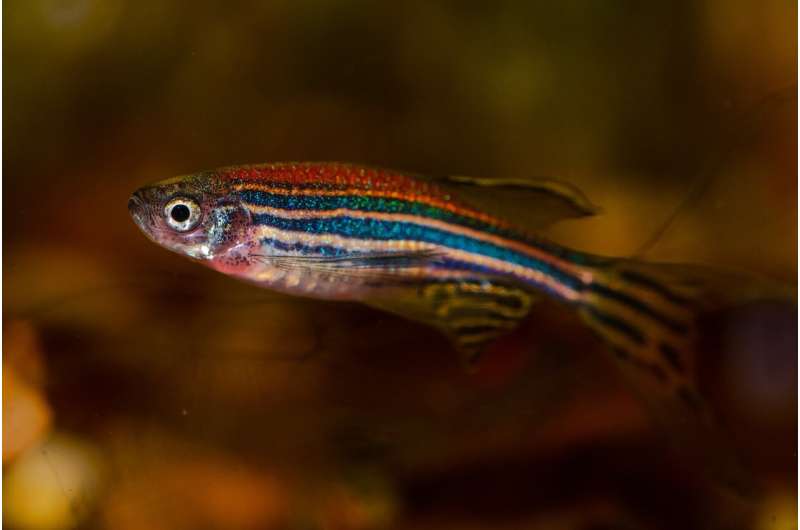Biologists using zebrafish to study COVID-19 effects

A group of UO biologists has developed a promising new model to study how underlying conditions exacerbate the health issues caused by COVID-19.
The key to the model’s potential is the use of zebrafish, because they have the same cellular components that the virus uses to infect humans. And they also have the same biological mechanisms that cause the underlying conditions.
Biology Professor Emeritus John Postlethwait’s lab is leading the collaborative effort alongside researchers from the labs of fellow UO biologists Karen Guilleman and Adam Miller. All three labs use zebrafish in their biomedical research because the animals share 80 percent of human disease genes and are a valuable resource for understanding human biology.
The new study will use zebrafish to uncover more information about how COVID-19, a disease caused by a new coronavirus that emerged in 2019, disproportionately affects people with preexisting conditions like diabetes, obesity and high blood pressure. To investigate that question, the group of researchers is examining a specific protein that is involved with both the viral infection with the coronavirus that causes COVID-19 and with other fundamental processes in the body, including the regulation of blood pressure, inflammation and a system involved in diabetes.
The protein, called Ace2, acts as a receptor for the virus and allows it to infiltrate human cells, where it can replicate and infect other cells. This same protein is responsible for removing a hormone associated with preexisting conditions like diabetes, high blood pressure and obesity.
The group found that in developing zebrafish, a single type of cell uses Ace2, the virus receptor. Zebrafish have that cell type in their body.
“It was clear that this Ace2 receptor is on a key cell type for understanding the biology of the disease and why people that have these underlying conditions are especially susceptible to poor health outcomes,” Postlethwait explained.
The researchers published a paper last fall that described the cells involved in those systems and now they’re turning to zebrafish to examine how the cells are responding to different events, including viral infection with the coronavirus that causes COVID-19.
While it is quite difficult for scientists to examine what’s happening at the cellular level in living humans, they can use living zebrafish to get a close look at what’s happening with this specific cell and how it’s responding to various events.
Instead of actually infecting the zebrafish with the virus, Postlethwait’s lab is using the spike protein, which is the part of the virus that binds to the cells and leads to infection. This spike protein allows the researchers to see what’s happening inside the zebrafish’s cellular system after the receptor allows this protein to get inside the cells. They have also mutated a group of zebrafish to get rid of this key Ace2 gene, so they can compare the reactions within the cells of the normal and mutated fish.
The biologists are now in the process of investigating how different mutations respond to the spike protein, which should help them better understand why patients with underlying conditions are especially susceptible to the negative outcomes associated with COVID-19.
Source: Read Full Article



